Table of contents
The genus of willowherb ( Epilobium) includes a large number of species. The herbal medicine Epilobii herba ( bio ?) mainly uses the raw narrow-leaved willowherb ( Epilobium angustifolium) and the small-flowered willowherb ( Epilobium parviflorum).
Use in the kitchen
Are narrow-leaved willowherb, mountain willowherb, glandular willowherb or square willowherb edible? Yes, you can eat all species of fireweed raw.
Young, raw plant shoots taste like lamb's lettuce; when cooked, they develop an aroma similar to asparagus. The roots taste sweet and spicy. Raw and unprocessed, all parts of the plant leave a slightly dull to rough coating on the palate. This effect can be alleviated by soaking the finely chopped parts of the plant in vinegar or citric acid. The raw flowers and buds make a decorative, edible ingredient for vegan raw food, salads and soups. Young, elastic stems can be peeled and prepared raw or as stick vegetables. 1 The inside of the stems tastes like cucumber.
Young fireweed leaves and flower buds can be used to make a type of green tea, which, when combined with fennel seeds, makes a tasty drink. 2 Fermented leaves serve as a theine-free (caffeine-free) alternative to black tea, also known as Ivan tea or Russian tea. 3 You can find out how to ferment leaves yourself HERE under the subheading 'Storage'.
Vegan willowherb recipe for 'asparagus'
Ingredients (for 2 people): 100 g young, soft, non-woody willowherb stalks (shoot tips, shoots, shoots, sprouts), peeled (April-May); salt ; 300 ml drinking water ; 1 tsp HOLL rapeseed oil ; ½ raw garlic clove, pressed; 40 g macadamia nuts ; nutmeg ;pepper.
Preparation: Simmer the peeled shoot tips in salted water for a few minutes and then drain. Gently sauté the garlic with HOLL rapeseed oil, then add the shoot tips. Mix the macadamia nuts, 2 tablespoons of water, nutmeg and pepper with a powerful hand blender to make a homogenous sauce. Arrange the wild asparagus on two plates and pour the macadamia sauce over it. Decorate with any Epilobium flowers you have.
Recipe for fresh willowherb tea
To make a cup of willowherb tea, pour 1.5-2 g of finely chopped herb with boiling water and strain after 10 minutes. 4 For medicinal purposes, Epilobium parviflorum tea and narrow-leaved willowherb tea are preferred.
Vegan recipes with willowherb can be found under the note: " Recipes that have the most of this ingredient ".
| Not only vegans or vegetarians should read this: Vegans often eat unhealthily. Avoidable nutritional mistakes |
Purchasing - Storage
Can you buy (narrow-leaved) willowherb in stores? The herb often consists of a mixture of several Epilobium species, which consists of stem and leaf fragments and a few flower and fruit parts. You can often buy pure small-flowered willowherb and Epilobium angustifolium tea. It is available in conventional or organic quality in health food stores, organic shops, pharmacies or online.
We have not yet found any products containing the medicinal plant in organic supermarkets such as Denn's Biomarkt or Alnatura or in supermarket chains such as Coop, Migros, Denner, Volg, Spar, Aldi, Lidl, Rewe, Edeka, Hofer or Billa.
The availability of willowherb (willowherb) varies depending on the size of the store, catchment area, etc. Our recorded food prices for the DA-CH countries can be found above under the ingredient image - and by clicking on them you can see their development at various suppliers.
Found in the wild
In Central Europe, plant parts such as leaves, shoot tips, flowers, flower buds, roots and stems are harvested in their tender, young state between April and July. 1 The flowering herb of young willowherb plants is cut off just above the ground. 5
Depending on the source, there are 165, 190 or 200 species worldwide. 3,5,6 In Central Europe, the narrow-leaved willowherb ( Epilobium angustifolium) is particularly common, especially on river banks, embankments, forest paths and clear-cut areas. 3
Storage tips
To preserve it, you can dry freshly harvested willowherb. To do this, spread the stems out in an airy place protected from direct sunlight or tie them into bunches and hang them upside down. Another option is fermentation. You can find out how this works HERE under the subtitle of the same name.
Ingredients - Nutritional values - Calories
Epilobium ( angustifolium) has a calorie content of 103 kcal per 100 g. The main nutrients consist of 19 g/100g carbohydrates, 2.8 g/100g fats and 4.7 g/100g proteins. 7.8
With 6.7 mg/100g, Epilobium ( angustifolium) is particularly rich in manganese. Other wild plants that can be eaten in larger quantities contain significantly lower levels: ground elder (1.4 mg/100g), raw garlic mustard (0.99 mg/100g), seaweed (0.99 mg/100g) or fresh nettles (0.78 mg/100g). 7.8
Other ingredients are 4-14% ellagitannins (mainly oenothein B, smaller amounts of oenothein A) and 1-2% flavonoids (mainly myricitrin, quercitrin and isomyricitrin). 9,10,11,12 Phytosterol (β-sitosterol) has been detected in some Epilobium species. 4
The complete ingredients of willowherb, the coverage of the daily requirement and comparison values with other ingredients can be found in our nutrient tables. In the article Nutrients explained you will get a detailed insight into the topic.
Effects on health
In a randomized, double-blind, placebo-controlled clinical study (2013), scientists investigated the efficacy and safety of a herbal preparation containing pumpkin ( Cucurbita pepo), Epilobium parviflorum, lycopene (carotenoid), African plum tree ( Pygeum africanum) and saw palmetto ( Serenoa repens) in 57 men with medically diagnosed BPH (benign prostatic hyperplasia / enlarged prostate). Regular assessments were carried out over three months using IPSS (International Prostate Symptom Score) as well as daytime and nighttime urinary frequency. The herbal preparation used in the study (Prostate EZE Max) proved to be well tolerated and caused a significant improvement in BPH symptoms. 15
Another clinical study (randomized, double-blind, placebo-controlled) from 2021 again examined the effect of Epilobium on BPH symptoms in 128 study participants. Daily intake of gastro-resistant hard capsules containing a standardized Epilobium angustifolium extract (500 mg) was carried out for six months. The assessment was based on defined parameters: prostate volume (PV) and bladder emptying (PVR) using prostate ultrasound, nocturnal urinary urgency (nocturia), prostate-specific antigen (PSA) and International Prostate Symptom Score (IPSS). The dietary supplements caused a significant improvement in bladder emptying and nocturia. No subject reported side effects and the intake showed no negative effects on liver and kidney function. 16
In a third clinical, randomized and placebo-controlled study from 2022, scientists investigated the effect of Epilobium fleischeri extract on the skin's microbiome. The result of the study on 23 women confirms the regulating effect of the extract on the skin flora. 17 Due to the small number of study participants, the results may not be sufficiently representative.
Evidence of the antimicrobial activity of the ethanolic extracts of E. angustifolium, E. hirsutum, E. palustre, E. tetragonum and E. dodonaei is also available from laboratory studies ( in vitro). E. angustifolium and E. dodonaei showed the broadest spectrum of activity against fungi, yeasts and bacteria. 18
In another laboratory study ( in vitro), Epilobium extracts showed high radical scavenging activity, comparable to that of the antioxidants trolox and ascorbic acid. 10,19 Among the species studied, Epilobium parviflorum extract had the highest antioxidant capacity. 10
An animal study investigated the effect of ethanolic Epilobium extracts on the intestines of mice with induced diarrhea. Due to the significant effect, it can be concluded that Epilobium has antidiarrheal as well as secretion and motility-inhibiting activity on the gastrointestinal tract. Scientists should confirm the beneficial treatment of gastrointestinal diseases with Epilobium 11 through in vivo studies.
Last but not least, the growth-inhibiting effect of Epilobium on human cell lines with BPH has been demonstrated by laboratory studies ( in vitro). 20,21,22,23 Of the species examined ( E. dodonaei, E. angustifolium and E. tetragonum), the former showed the strongest effect and the highest concentration of oenothein B. 21
It should be noted that the pharmacological and clinical standardization of commercially available Epilobii herba (formerly Herba epilobii) is difficult. The products usually consist of mixtures of different species with different and often only partially identified phenolic contents. 10
Another study highlights that the high concentration of oenothein B is responsible for the anti-inflammatory and antioxidant activity of the extracts ( E. angustifolium, E. hirsutum and E. parviflorum). In all the species tested in the study, the content of oenothein B was high and always exceeded 2% in the raw material. 9
Dangers - Intolerances - Side effects
Does willowherb tea or small-flowered willowherb have side effects? There are no known interactions or side effects from using the medicinal plant. 13 At the time of the assessment by the HMPC ( Committee on Herbal Medicinal Products) in 2016, there were no reports of side effects from medicines containing Epilobium angustifolium or Epilobium parviflorum. There is nothing to speak against long-term use of the herb. It has no relevant use in patients under 18 years of age. 14
Use as a recognized medicinal plant
In 2016, the plant was evaluated by the HMPC. As a registered medicinal product (trad. use), willowherb can be used to relieve lower urinary tract symptoms associated with benign BPH. If the doctor has ruled out a serious illness, the herb can be used over a long period of time. Willowherb is usually used as a medicinal tea to drink. The herb can be included in combination preparations with other herbal substances. 23
Small-flowered species are preferably used for phytotherapeutic medicinal products, e.g. small-flowered willowherb ( E. parviflorum), mountain willowherb ( E. montanum), rose-red willowherb ( E. roseum) and, less frequently, hill willowherb ( E. collinum). Large-flowered species are also frequently used, especially narrow-leaved willowherb ( E. angustifolium) and hairy willowherb ( E. hirsutum). 4 According to the HMPC, only the above-ground parts of E. angustifolium and/or E. parviflorum are considered to be registered medicinal products under willowherb herb. 23
Folk medicine - natural medicine
In contrast to other medicinal plants , Epilobium has no historical tradition. From the middle of the last century, written references to it increased and more recently the medicinal plant has attracted attention due to its active ingredients 2 in the context of scientific studies.
Reports of experience show that willowherb is apparently successful in treating micturition disorders (disorders of bladder emptying) associated with BPH, 4 which has since been confirmed by two clinical studies. 15,16 In traditional medicine, epilobium is considered effective against gastrointestinal diseases. There is plausible evidence from an animal study for its use in folk medicine as a non-specific remedy. 11
Ecological footprint - animal welfare
Despite extensive research, we have not found any essential information/data/figures on the ecological footprint of narrow-leaved willowherb.
In general, it should be remembered that the CO2 footprint and water footprint of a food depend on various factors. The type of agricultural production (conventional vs. organic), average or seasonal or regional production, domestic production or import by truck, ship or plane, different types of packaging and whether the goods are fresh or frozen all play a decisive role.
Detailed explanations of various sustainability indicators (such as ecological footprint, CO2 footprint, water footprint) can be found here.
Animal protection - species protection
What role does willowherb play for bees and insects? Willowherb (or woodland) is an important food plant for bees, mainly in the months of June and July (summer forage). In addition to bees, bumblebees, wasps and various butterflies are common pollinators. 26 Roe deer also have a preference for willowherb. The caterpillars of some species of hawk moths ( Sphingidae) feed mainly or even exclusively on willowherb. 27 Willowherb is therefore an important food plant for these caterpillars in Central Europe. The common vine hawk moth has been found on E. hirsutum, the evening primrose hawk moth on E. hirsutum and E. palustre, the bedstraw hawk moth on E. angustifolium and the bat hawk moth, which lives exclusively on E. dodonaei. 24
Only cut off drying parts of the shrubs in spring. Insects like to hide in them during the cold season and provide a welcome source of food for local birds in winter.
Caution: Some species of the willowherb family ( Epilobium sp.) can become invasive in non-native areas. 28
Worldwide occurrence - cultivation
The numerous species of the plant genus grow worldwide in montane, northern and arctic regions of Europe, Asia, Africa, Australia, and North and South America. They can be found from sea level up to altitudes of 5000 m, often in disturbed and damp places. 6 More than 30 species are known in Europe. 5
Which species of willowherb are better known in Europe? The narrow-leaved willowherb ( E. angustifolium) can be found in forest clearings and in bushes, the hill willowherb ( E. collinum) in rock crevices and wall joints, the hairy willowherb ( E. hirsutum) in damp locations in forests and ditches, the mountain willowherb ( E. montanum) in deciduous forests and bushes, the rosemary willowherb ( E. palustre), also called marsh willowherb, in large sedge swamps and on fertilized wet meadows, the small-flowered willowherb or brook willowherb ( E. parviflorum) on perennial borders on woods in partial shade and the rose-red willowherb ( E. roseum) in river reed beds. 1
Growing willowherb in the garden or as a potted plant
Growing willowherb in the garden - what should you bear in mind? Willowherb plants multiply quickly through self-seeding and sometimes through runners. To prevent self-seeding, you can cut the willowherb back before the seeds ripen. Since the plant is a deep-rooted plant, cultivation as a potted plant is less advisable. You can find further information on growing it in the garden HERE under the subtitle of the same name.
Potential for confusion
In the early growth stage, flowerless Epilobium shoots and common goldenrod ( Solidago virgaurea) look similar. There is no danger of confusion, as the non-toxic goldenrod is also edible and a traditional herbal medicine according to HMPC. You can find distinguishing features HERE under the subtitle of the same name.
Further information
The genus of willowherb ( Epilobium) belongs to the evening primrose family (Onagraceae).
The genus name is a combination of the three Greek words 'epi' for on, 'lobos' for pod and 'ion' for violet. The German name illustrates the similarity of the leaves to those of the willow ( Salix); 'Röschen' is an allusion to the red color of the flowers. 13
(Narrow-leaved) willowherb can quickly colonize clearings, gaps, clear-cuts or storm-thrown areas in forests due to their light and airborne seeds. The plants thus prevent humus loss, drying out and erosion of these areas, as well as nitrate losses into the groundwater. 24
Some species tend to form hybrids, 5,25 such as the glandular willowherb ( Epilobium ciliatum), which has been introduced into Europe. The Federal Agency for Nature Conservation (D) sees a high risk potential for native species of the genus Epilobium. 25
Alternative names
General alternative names and spellings are willowherb, willow-rose or willow-rose. Fireweed, fireweed plant, perennial fireweed (perennial fireweed), wood willowherb or woodland willowherb refer more to the species Epilobium angustifolium. The English name is willowherb or fireweed.
Incorrect spellings include willowherb, small willowherb (tea), small willowherb, willowherb or fine-leaved willowherb.
Latin synonyms for Epilobium L. are Zauschneria C. Presl, Pyrogennema Lunell, Crossostigma Spach, Cratericarpium Spach, Cordylophorum Rydb. or Boisduvalia Spach.
Bibliography - 26 Sources
| 1. | Fleischhauer SG, Guthmann J, Spiegelberger R. Enzyklopädie. Essbare Wildpflanzen. 2000 Pflanzen Mitteleuropas. Aarau: AT Verlag; 1. Auflage. 2013. |
| 2. | Niederegger O, Mayr C. Heilpflanzen der Alpen. Gesundheit aus der Natur von A bis Z. Innsbruck: Tyrolia-Verlag; 2006. |
| 3. | Bzfe.de Bundeszentrum für Ernährung. Weidenröschen. Junge Stängel schmecken wie Spargel. Stand 6.5.2020. |
| 4. | Blaschek W. (Herausgeber). Wichtl –Teedrogen und Phytopharmaka. Ein Handbuch für die Praxis. Stuttgart: Wissenschaftliche Verlagsgesellschaft mbH; 6. Auflage. 2016. |
| 5. | Pahlow M. Das grosse Buch der Heilpflanzen. Gesund durch die Heilkräfte der Natur. Hamburg: Nikol Verlagsgesellschaft mbH & Co. KG; 8. Auflage. 2019. |
| 6. | Efloras.org Epilobium Linnaeus. |
| 9. | Kiss AK, Bazylko A, Filipek A, et al. Oenothein B’s contribution to the anti-inflammatory and antioxidant activity of Epilobium sp. Phytomedicine. 2011;18(7):557-560. |
| 10. | Hevesi Tóth B, Blazics B, Kéry Á. Polyphenol composition and antioxidant capacity of Epilobium species. Journal of Pharmaceutical and Biomedical Analysis. 2009;49(1):26-31. |
| 11. | Vitali F, Fonte G, Saija A, Tita B. Inhibition of intestinal motility and secretion by extracts of Epilobium spp. in mice. Journal of Ethnopharmacology. 2006;107(3):342-348. |
| 12. | Remmel I, Vares L, Toom L, Matto V, Raal A. Phenolic compounds in five Epilobium species collected from Estonia. Nat Prod Commun. 2012;7(10):1323-1324. |
| 13. | Arzneipflanzenlexikon.info Weidenröschen. |
| 14. | Ema.europa.eu Epilobii herba. |
| 15. | Coulson S, Rao A, Beck SL, Steels E, Gramotnev H, Vitetta L. A phase II randomised double-blind placebo-controlled clinical trial investigating the efficacy and safety of ProstateEZE Max: a herbal medicine preparation for the management of symptoms of benign prostatic hypertrophy. Complement Ther Med. 2013;21(3):172-179. |
| 16. | Esposito C, Santarcangelo C, Masselli R, et al. Epilobium angustifolium L. extract with high content in oenothein B on benign prostatic hyperplasia: A monocentric, randomized, double-blind, placebo-controlled clinical trial. Biomed Pharmacother. 2021;138:111414. |
| 17. | Sfriso R, Claypool J, Roche M, Imfeld D. 5-α reductase inhibition by Epilobioum fleischeri extract modulates facial microbiota structure. Int J Cosmet Sci. 2022;44(4):440-452. |
| 18. | Battinelli L, Tita B, Evandri MG, Mazzanti G. Antimicrobial activity of Epilobium spp. extracts. Farmaco. 2001;56(5-7):345-348. |
| 19. | Hevesi Tóth B, Blazics B, Kéry A. Polyphenol composition and antioxidant capacity of Epilobium species. J Pharm Biomed Anal. 2009;49(1):26-31. |
| 20. | Stolarczyk M, Piwowarski JP, Granica S, Stefańska J, Naruszewicz M, Kiss AK. Extracts from Epilobium sp. herbs, their components and gut microbiota metabolites of Epilobium ellagitannins, urolithins, inhibit hormone-dependent prostate cancer cells-(Lncap) proliferation and PSA secretion. Phytother Res. 2013;27(12):1842-1848. |
| 21. | Vitalone A, McColl J, Thome D, Costa LG, Tita B. Characterization of the effect of Epilobium extracts on human cell proliferation. Pharmacology. 2003;69(2):79-87. |
| 22. | Vitalone A, Guizzetti M, Costa LG, Tita B. Extracts of various species of Epilobium inhibit proliferation of human prostate cells. Journal of Pharmacy and Pharmacology. 2010;55(5):683-690. |
| 23. | Ema.europa.eu Weidenröschenkraut. EMA/822538/2015. 2016. |
| 24. | Lwf.bayern.de Schwärmer schwärmen für Weidenröschen. LWF aktuell 101/2014. |
| 25. | Bfn.de Naturschutzfachliche Invasivitätsbewertungen für in Deutschland lebende gebietsfremde Gefässpflanzen. BfN-Skripten 352. |
| 26. | Kremer BP. Mein Garten – Ein Bienenparadies. Bern: Haupt Verlag; 2. Auflage. 2018. |
| 27. | Schmidt O. Schwärmer schwärmen für Weidenröschen: Die Raupen mancher Schwärmerarten haben Weidenröschen zum Fressen gern. ÖWF aktuell 101/2014. |
| 28. | Ronzhina DA. Ecological Differentiation between Invasive and Native Species of the Genus Epilobium in Riparian Ecosystems Is Associated with Plant Functional Traits. Russ J Biol Invasions. April 2020;11(2):132–42. |

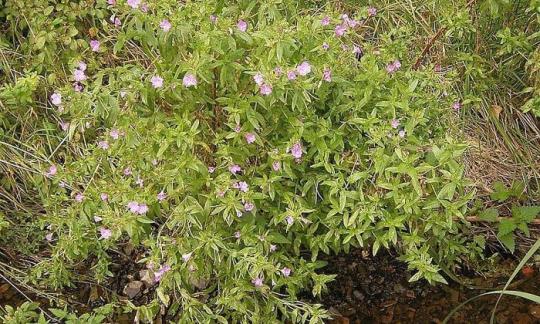


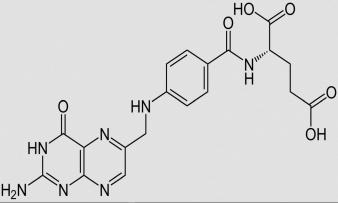
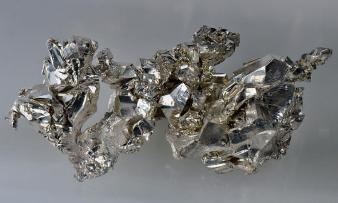
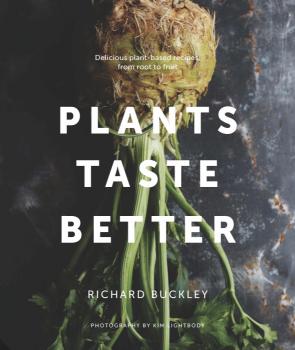
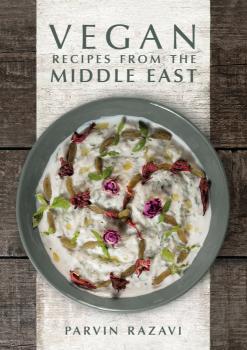
Comments